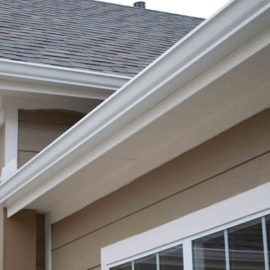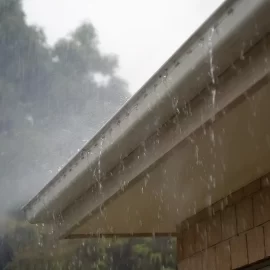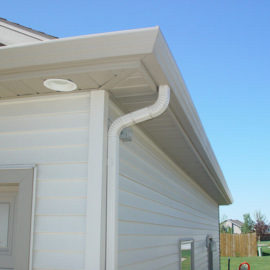If you have water or moisture stains that spread through ceilings or walls, the cause is most likely a water leak. Fixing roof leaks is usually relatively easy, but finding them is not so easy. If you have a damaged roof, it’s best to fix it right away, even if it doesn’t bother you much or if you’re going to have a new roof next year. Before long, small leaks can lead to big problems, like rotten moulds, frames and siding, damaged insulation, and damaged ceilings. That expensive repair or rebuild could have been much cheaper if you had paid proper attention to it when it was just a small stain. You could even have done it on your own and have run with minimal expense. Let’s have a look at seven ways to fix leaks!
#1. Repair leaks due to roof skylights
People who have skylights on their roofs are much more likely to experience leaks and leaks during periods of heavy rain than people without skylights. No matter how cleverly the skylights have been installed, roof leaks will still be possible. While most people should have no problem during light showers, heavy rains can cause different results.
#2. Repair leaks in the pipes
Basic plumbing, that is, elementary pipes that every house should have, will always be a reason of risk for leaks and leaks. Leaks can happen with something as simple and essential as a ventilation duct. Depending on the plumbing set up, some homes may be more vulnerable to leaks during heavy rains than others. If you’re a homeowner and concerned about these types of failures, you can ask expert local plumbers what you can do to minimize these types of problems, especially if you live in areas prone to heavy rain. CRX Expert has an emergency service to help you prevent and repair leaks, leaks, damaged toilets, leaky pipes, etc.
#3. Fix leaks due to the chimney in your roof
The houses with fireplaces are more prone to leaks in the roof that houses without chimneys. While water can seep through the chimney, chimneys’ exterior structure tends to be very efficient at retaining water, thus forming the basis for further seepage. If you have a chimney and a roof with tiles, you multiply the risk of water accumulation and more leaks. Make sure always to keep the health of your roof under review.
#4. Repair leaks in metal roofs
Metal roofs can rust over time, so some homeowners may experience roof leaks only from wear and tear on their sheets. This is challenging to fix during heavy rainy seasons and can cause additional damage to a corroded roof. Most of the time, the only solution is the quick replacement of the sheets or patches.
#5. Repair leaks in homes with an attic
Homeowners with attics that have not been adequately ventilated may be indirectly exposing themselves to the risk of roof leaks. It is an area where the water can freeze due to the weather; the neglected attic represents a problem. An attic that is warm enough will cause meltwater to form and collect all over the roof. This same melted water can freeze again and melt again. Heavy rains during the warmer winter days will only make the situation worse for homeowners. A plumber can help you with a quick fix or some prevention tips before it’s too late.
#6. Prevent leaks by doing ongoing maintenance
You should keep your roof under maintenance, under control, as the shingles eventually get old and cracked, the caulk wears or peels, the roof rusts or the wood rots. Sometimes roof leaks that occur during heavy rains occur because the roof components in question eventually begin to degrade. A review by you will prevent catastrophic aquatic events in your living room or bedroom from time to time.
#7. Repair leaks due to stormy weather
If you live in areas that are generally prone to bad weather, you may have suffered roof damage from previous storms. People living in heavily wooded areas may have had many animals crawling onto their roofs, or they may have had tree limbs hitting their ceilings. These types of casual events can deteriorate the conditions of the shelter of your home. If this is your case, you should also do preventive care and timely repairs. Schedule an inspection every three months looking for damage to your roof.
What to do in case of a leak?
If your roof leaks, it could indicate that your attic has been leaking for some time and that it has flooded the insulation and plaster layer. You may want first to put a bucket or bucket, and then make a small hole where the dripping is taking place so that the water well is drained this way. Once the storm is over, call your repair company. They will undoubtedly cover some part of the roof with a tarp or change some tiles. Also, if there is no actual damage to the ceiling, they may easily recognize the problem. If you can access your attic, have a plumber go up and dry the damp roof insulation and any other visible flaws.



